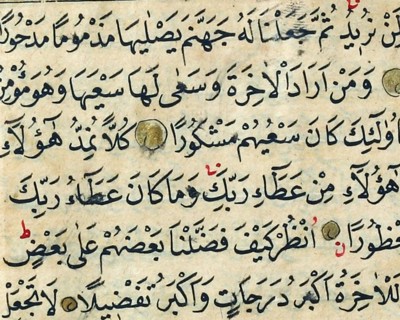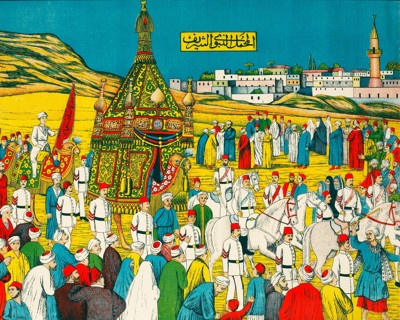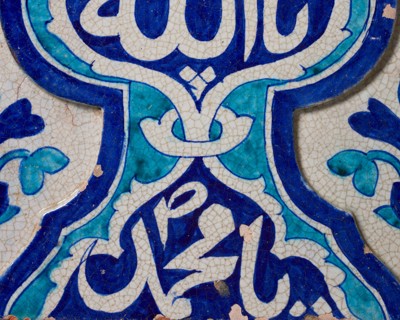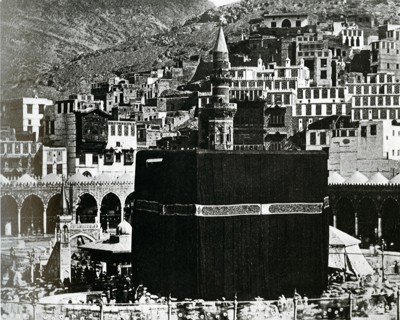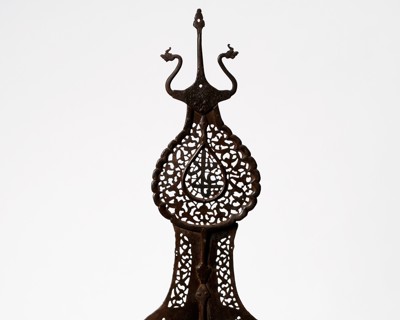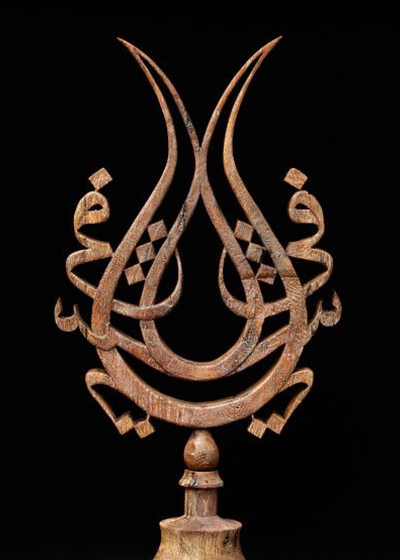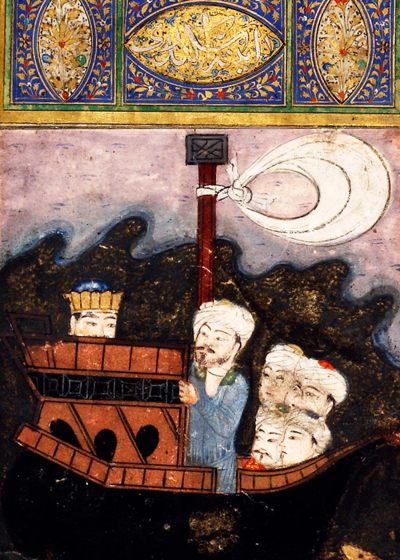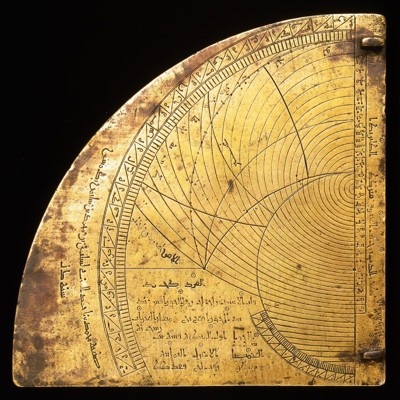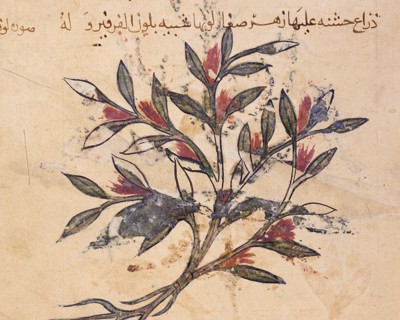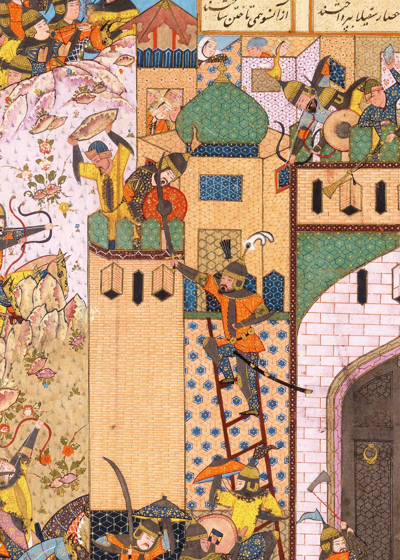Det religiøse billedforbud
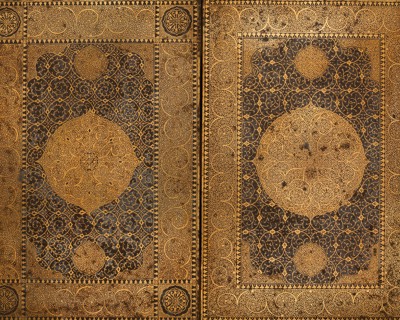
Ingen skal forledes til at tilbede en genstand i stedet for Gud
Et iøjnefaldende træk ved kunsten fra den islamiske verden, er den begrænsede brug af naturalistiske gengivelser af levende væsener. Dette skyldes, at islam, i lighed med jødedommen og i visse perioder med kristendommen, på det religiøse område bekender sig til en form for billedforbud – et forbud, der dog altid er blevet fortolket meget forskelligt.
Koranen giver ingen specifikke retningslinjer for brugen af billeder. I hadith’erne derimod – de overleverede traditioner om Muhammads ord og gerninger – er der tale om en tydelig uvilje mod figurative skildringer. I visse hadith’er gøres det således utvetydigt klart, at en person, der forsøger at efterligne Guds skaberværk, på den yderste dag vil være dårlig stillet.
”Den der skaber billeder i denne verden, vil blive pålagt at blæse ånd i dem på Opstandelsens Dag, men han vil ikke kunne blæse”.
Hadith, Sahih Muslim (818-875).
Formålet med et billedforbud har fra begyndelsen været at undgå afgudsdyrkelse. Som Muhammad selv demonstrerede, da han rensede Kabaen for skulpturer og afgudsbilleder, var det en vigtig del af den nye lære, at ingen længere skulle forledes til at tilbede en genstand eller et billede i stedet for Gud.
Med fjernelsen af afgudsbilleder fjernedes imidlertid ikke al interesse for figurativ kunst. Umayyade-kaliffernes pragtbygninger og ørkenpaladser dekoreredes i den kristne sen-antiks billedrige stil, og senere muslimske magthavere både i øst og vest omgav sig i perioder med monumentalmaleri, figurative stenrelieffer, skulpturer og miniaturemalerier. Hvor den figurlige udsmykning fandt anvendelse, var det dog sjældent som det dominerede udtryk og aldrig i religiøse sammenhænge.
Den strenge holdning til den religiøse dekoration er forblevet et grundprincip islams historie igennem. Billeder har på intet tidspunkt fundet vej til moskeernes indre rum, ingen muslimsk kunster har gjort forsøg på at skildre Gud (så vidt vides), Koranen er aldrig blevet illustreret, og fremstillinger af profeten Muhammad er sjældne. Med kaliffen Abd al-Maliks møntreform i 696 introduceredes endvidere et billedforbud i dele af det offentlige rum: herskerportrætterne fjernedes fra de islamiske mønter og erstattedes med kalligrafisk udsmykning.
Resultatet af tilbageholdenheden over for brugen af figurative fremstillinger skulle med tiden bevirke, at de muslimske kunstnere, i højere grad end kunstnere i andre kulturer, rettede deres koncentration mod abstrakte udtryk. I den traditionelle islamiske kunst raffineredes således planteornamentikken, de geometriske mønstre og legen med bogstaver, kalligrafien, til ukendte højder.
